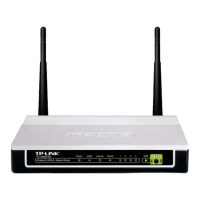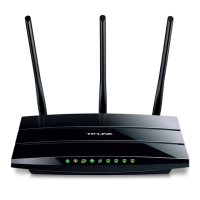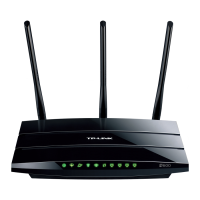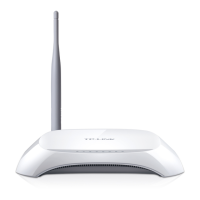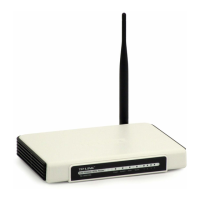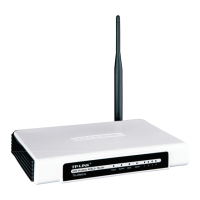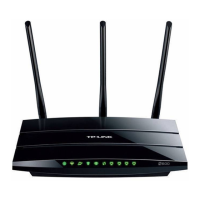TD-W8960N 300Mbps Wireless N USB ADSL2+ Modem Router User Guide
Note:
When you select PPPoA or PPPoE for the WAN Setup, or when you select Enable NAT for the
type of IPoA and IPoE connection (4.4.2 WAN Service), you will see the NAT menu in the
Web-based Utility (shown in Figure 4-24).
Choose “Advanced Setup”“NAT”, there are three submenus under the main menu: Virtual
Servers, Port Triggering, DMZ Host and ALG. Click any of them, and you will be able to
configure the corresponding function.
Figure 4-24
4.4.5.1 Virtual Servers
Choose “Ad
vanced Setup”“NAT”“Virtual Servers”, you can set up virtual servers on the
screen below (shown in Figure 4-25).
Virtual servers can be used for settin
g up public services on your LAN, such as DNS, Email and
FTP. A virtual server is defined as a service port, and all requests from the Internet to this service
port will be redirected to the computer specified by the server IP. Any PC that was used for a
virtual server must have a static or reserved IP Address because its IP Address may change when
using the DHCP function.
Figure 4-25
Virtual Server Table: The table indicates the information about the Virtual Server entries.
Server Name: This is the name of the Virtual Server. It is exclusive and must be filled in.
External Port Start: The base number of External Ports. You can type a service port or
leave it blank.
External Port End: The end number of External Ports. You can type a service port or
leave it blank.
Protocol: The protocol used for this application, TCP, UDP, or TCP/UDP.
Internal Port Start: The base number of Internal Ports. You can type a service port or
leave it blank.
Internal Port End: The end number of Internal Ports. You can type a service port or leave
it blank.
31
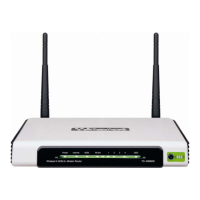
